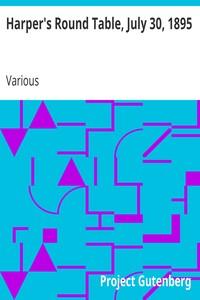Read this ebook for free! No credit card needed, absolutely nothing to pay.
Words: 12969 in 6 pages
This is an ebook sharing website. You can read the uploaded ebooks for free here. No credit cards needed, nothing to pay. If you want to own a digital copy of the ebook, or want to read offline with your favorite ebook-reader, then you can choose to buy and download the ebook.


: Applied Psychology: Driving Power of Thought Being the Third in a Series of Twelve Volumes on the Applications of Psychology to the Problems of Personal and Business Efficiency by Hilton Warren - Psychology Applied; Employees Recruiting
us degrees of color, light and shade. Every quality it possesses is represented by a corresponding visual, auditory, tactual or other sensation.
When you look at a building, you receive a number and variety of simultaneous sensations, all of which, by the exercise of a causal judgment, you at once ascribe to the same point in space. From this time on the same flowing together of sensations from the same place will always mean for you that particular material thing, that particular building. You have a sensation of yellow, and forthwith a causal judgment tells you that something outside of your body produced it. But it would be a pretty difficult matter for you to know just what this something might be if there were not other simultaneous sensations of a different kind coming from the same point in space. So when you see a yellow color and at the same time experience a certain familiar taste and a certain softness of touch, all arising from the same source, then by a series of classifying judgments you put all these different sensations together, assign them to the same object, and give that object a name--for example, "butter."
This process of grouping and classification that we are describing under the name of "classifying judgments" is no haphazard affair. It is carried on in strict compliance with certain well-defined laws.
These laws prescribe and determine the workings of your mind just as absolutely as the laws of physics control the operations of material forces.
While each of these laws has its own special province and jurisdiction, yet all have one element in common, and that is that they all relate to those mental operations by which sense-perceptions, causal judgments, and even classifying judgments, past, present and imaginative, are grouped, bound together, arranged, catalogued and pigeonholed in the archives of the mind.
These laws, taken collectively, are therefore called the Laws of Association.
THE FOUR PRIME LAWS OF ASSOCIATION
If there is any one thing in the world that seems utterly chaotic, it is the way in which the mind wanders from one subject of thought to another. It requires but a moment for it to flash from New York to San Francisco, from San Francisco to Tokio, and around the globe. Yet mental processes are as law-abiding as anything else in Nature.
So much is this true, that if we knew every detail of your past experience from your first infantile sensation, and knew also just what you are thinking of at the present moment, we could predict to a mathematical certainty just what ideas would next appear on the kaleidoscopic screen of your thoughts. This is due to laws that govern the association of ideas.
There are, therefore, four Prime Laws of Association--the Law of Habit, the Law of Recency, the Law of Contiguity and the Law of Vividness.
Every idea that can possibly arise in your thoughts has its vast array of associates, to each of which it is linked by some one element in common. Thus, you see or dream of a yellow flower, and the one property of yellowness links the idea of that flower with everything you ever before saw or dreamed of that was similarly hued.
But the yellow-flower thought is not tied to all these countless associates by bonds of equal strength. And which associate shall come next to mind is determined by the four Prime Laws of Association.
Free books android app tbrJar TBR JAR Read Free books online gutenberg
More posts by @FreeBooks

: O Marquez de Pombal (folheto para poucos) by Cordeiro Manoel Caldas - Pombal Sebastião José de Carvalho e Melo Marquês de 1699-1782 PT Biografia







